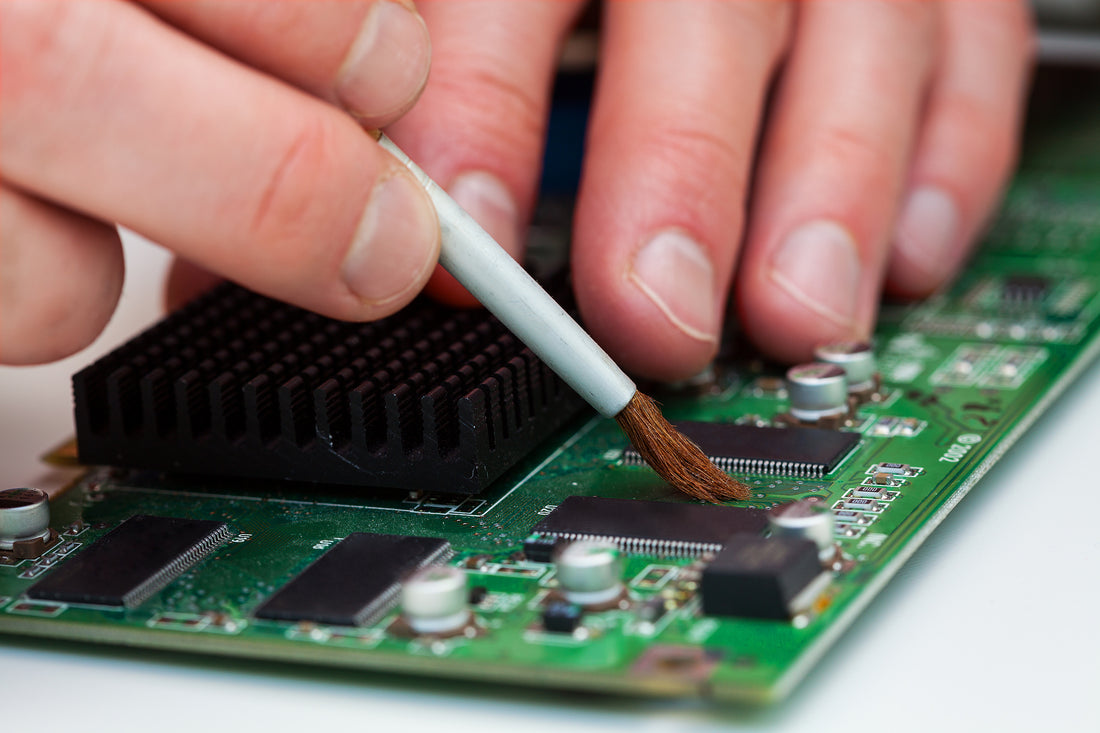Flux is a necessary element of soldering. Soldering fills the gaps between electrical or mechanical components so that a mechanical, thermal, or even electric connection is created.
Circuit board flux removes the oxide layer so the solder can bond to the surfaces. Flux not only aids in the soldering process by removing dirt and films, but it also increases the wetting of the solder which can help it flow more smoothly.
Should You Clean Flux After Soldering?
When you solder your circuit board, there always is flux residue that is left behind from the flux. And if you are uncertain as to whether to clean the circuit board flux after soldering, the answer is yes, you should.
Below Are A Few Reasons Why Cleaning Flux Residues is Recommended:
Enhances the Reliability of Electronic Components & PCB’s
Cleaning flux off the PCB will help improve the overall performance, the appearance of the board as well as long-term durability. Flux residues are acidic. They can corrode the components and damage the PCB over time if the residue isn’t properly cleaned.
Helps to Prevent Corrosion
Flux residues left on electronic circuit boards are acidic. If they aren’t removed with a cleaning process, the residues can attract moisture from the air and lead to corrosion of component leads, and PCB contacts.
Improves the Appearance of the PCB
If the circuit board flux isn’t cleaned off, it can form spots from the residue and make it look not only dirty but like a possible defect. There are small particles called solder balls that can be encapsulated inside the PCB flux and should be cleaned off. By cleaning the flux, it can look better which can be especially important when selling PCBs to customers.
Could Affect Adhesion of Conformal Coatings
If there are residues from the flux left on the PCB before a conformal coating process, it can prevent the coating from adhering. This can occur because there could be small amounts of gas or steam that can affect the adhesion.
Prevent Dendritic Growth from Ionic Contamination
There can be polar or Ionic particles that are left from the circuit board flux residue. When these particles are exposed to moisture from the air and then a current is applied, it can link into a branch or chain that is called a dendrite. Since these dendrites are conductive, any flux left on the circuit board could cause leakage or even over time, a short circuit, and therefore cleaning the flux is necessary. If a no-clean flux is used, there isn’t as much of a concern.
Should You Clean a No-Clean Flux?
Ironically, sometimes. A no-clean flux might need to be cleaned for most of the above reasons. While no-clean fluxes were supposed to eliminate the need for PCB cleaning, this isn’t the case. No-clean fluxes have salt activators that when in contact with other chemicals or heat can leave behind a white residue. And, therefore, long-life or critical components should be cleaned after soldering. Short-life consumer products, however, do not need to be cleaned.
If you have any questions about how to clean and remove soldering flux or which flux is best for your assembly, please contact our technical support team. We have many different circuit board flux types from which you can choose.

